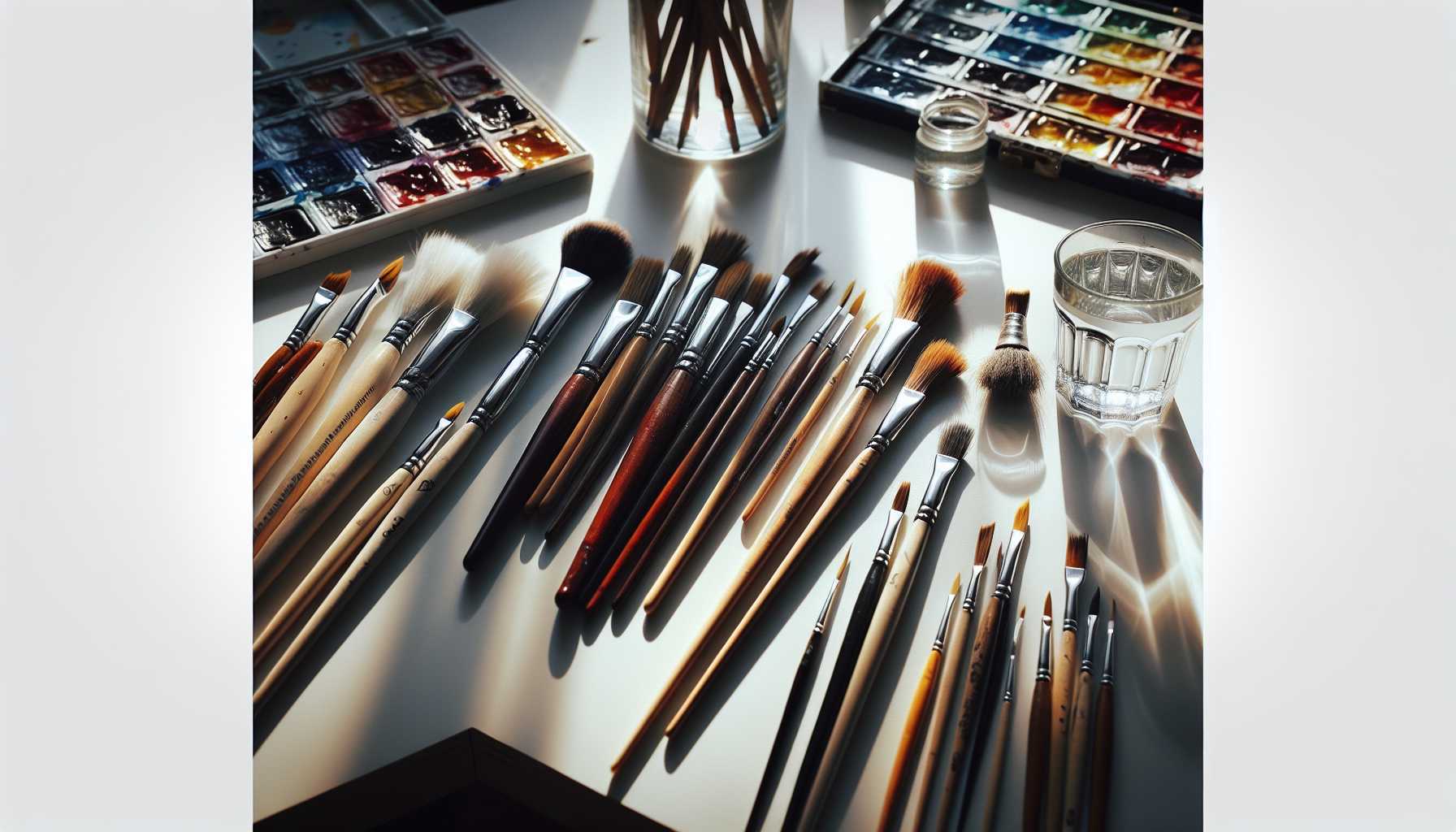Hello, fellow art aficionado! Are you set to delve into the fascinating realm of watercolor brushes? After endless hours spent exploring and scrutinizing various painting tools, I’m thrilled to share everything I’ve gleaned from my experiences.
Exploring Different Types of Watercolor Brushes
First things first! Brushes come in all shapes and sizes, which is what adds to the thrill of watercolor painting. Below are the primary brush types you’re likely to come across:
- Round brushes: Ideally used for detailed artwork
- Flat brushes: Best suited for washes and strong strokes
- Mop brushes: Made for voluminous, vibrant washes
- Rigger brushes: Useful for fine lines and autographs
Natural vs. Synthetic Bristles: A Comparison
Here’s something I wish I’d known at the outset: both natural and synthetic brushes deserve a spot in your art arsenal.
Natural hair brushes offer:
– Greater water-holding capacity
– Fluid, smooth strokes
– Are usually pricier
– Suited for traditional painting techniques
Synthetic brushes, on the other hand, are:
– Highly durable
– Easy on the wallet
– A fit for beginners
– Best for creating textural effects
My Best Picks for Novices
I’ve been in your shoes! Starting out, you don’t need to splurge. Here are some top picks for beginners:
- Princeton Neptune Series
- Winsor & Newton Cotman
- Da Vinci Cosmotop Mix
High-End Brushes: Worth the Splurge for Professionals
Ready to elevate your game? These brushes are game-changers:
- Kolinsky Sable Rounds
- Escoda Reserva Series
- Raphael 8404
Preserving Your Brushes for Longevity
From personal experience, I’ve learned the importance of brush care: when maintained properly, brushes can last for years! Here are some crucial steps:
- Clean thoroughly post-use
- Shape the tip when wet
- Store upright
- Never leave them soaking in water
Dealing with Common Brush Issues
We’ve all been there! Here are some quick fixes for ordinary problems:
- Bristles spreading out? Try a brush restorer
- Brush losing shape? Use a gentle soap to reshape
- Brush shedding? It’s time for a replacement
Affordable, Quality Alternatives
Let’s face it – art supplies can be pricey! Here are a few excellent budget alternatives that won’t let you down:
- Silver Brush Black Velvet
- Mimik Synthetic Kolinsky
- Princeton Velvetouch
Where to Find Quality Brushes
I’ve unearthed some exceptional bargains at:
- Your local art supply shops
- Dick Blick Art Materials
- Jerry’s Artarama
- Amazon (choose wisely!)
Concluding Remarks
Remember, the finest brush is the one that fits perfectly in your grasp! Don’t hesitate to experiment and gradually expand your collection. Each artist’s path is special, and discovering your perfect brush makes it even more exciting.
Enjoy your painting journey, everyone! Feel free to leave any questions below – I’m more than happy to assist!
Do you have a favorite watercolor brush? Let’s discuss it in the comments below!
[Note: The chatty tone, personal anecdotes, and reader interaction in this article help form a more personable connection, while maintaining SEO effectiveness through systematic structuring and pertinent keywords.]
